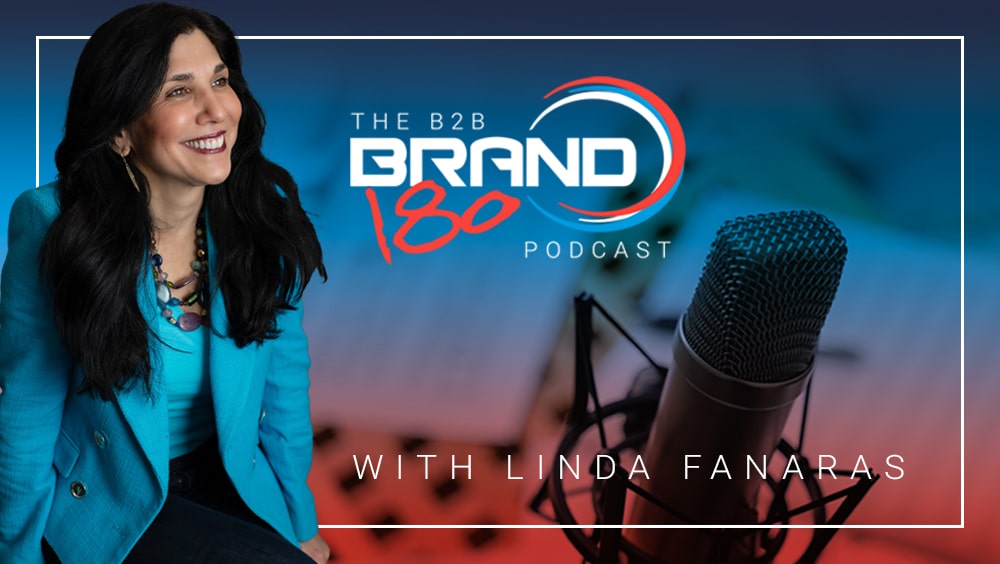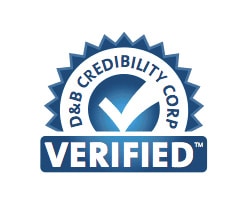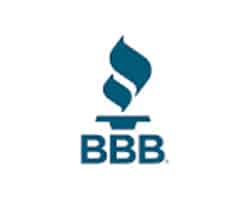In this episode of the B2B Brand180 Podcast, Linda interviews Jimi Gibson, VP of Brand Communications at Thrive Agency. Jimi, who is also a TEDx speaker and Forbes Agency Council member, shares his journey from a professional magician to a marketing expert. He introduces the concept of the ‘Magic Script,’ a framework that helps brands connect with audiences in a meaningful way by creating parallels to the stages of a magic trick.
This episode covers effective messaging, the importance of curiosity in marketing, and offers practical examples for businesses to engage their audience. Jimi also discusses his book, ‘Chasing Carrots,’ which encourages individuals to embrace their unique qualities for success.
01:00 The Magic Script: A Framework for Effective Messaging
01:38 Experiential Exercise: Building a Message
08:14 Breaking Down the Marketing Message
13:35 Creating Curiosity and the Big Reveal
16:10 The Magic Script and Its Applications
17:53 Common Marketing Mistakes and How to Avoid Them
18:56 The Power of Magic in Marketing
https://www.linkedin.com/in/jimi-gibson/
https://www.amazon.com/Chasing-Carrots-wont-purpose-bananas/dp/1736052624
Linda’s LinkedIn: https://www.linkedin.com/in/lindafanaras/
Millennium Agency: Brand Strategy | Marketing | Web Design: https://mill.agency
YouTube Channel: https://www.youtube.com/@mill.agency/
Linda’s Books:
Claim Your White Space
https://www.amazon.com/CLAIM-YOUR-WHITE-SPACE-CRITICAL-ebook/dp/B0CLK8VLYV
Passion + Profits: Fueling Business And Brand Success
https://www.amazon.com/Passion-Profits-Fueling-Business-Success-ebook/dp/B0CLLDDSNX/
Linda Fanaras:
Welcome to the B2B Brand180 Podcast where we will discuss branding and marketing tools for business. My goal today is to help you with transformative, innovative approaches that can help you make 180 degree shift in your marketing efforts, or actually complete reversals in brand strategy. Hi, I am Linda Fanaras and I’m the owner of Millennium Agency, a branding and growth strategy firm, and the host of the B2B Brand180 Podcast. Today I am bringing in Jimmy Gibson from Thrive Agency. To give you a little bit of background about Jimmy, Jimmy has been helping businesses figure out what to say and how to say it so people actually listen and take action. And he’s the VP of Brand Communications at Thrive Agency. A TEDx speaker and a Forbes Agency council member. And before all that, he was a professional magician. So we’ll get into some fun stuff today. So, which actually that makes a weird amount of sense once you hear about how he thinks about messaging. So he created something called the Magic Script, which we’ll talk a little bit about today. It’s a framework that helps. Brands connect with people in real human way, and he’s one of those rare folks who can make marketing feel less like noise and make it feel more like a conversation worth having. Jimmy also wrote a book called How to Move From the Magician to the Marketer Out of the Box, and he’ll talk a little bit about that later. So welcome, Jimmy. Thanks for joining me today.
Jimi Gibson:
Hi, Linda. It’s great to have
Linda Fanaras:
you. Yeah, thank you. Go ahead.
Jimi Gibson:
Thank you. Yeah.
Linda Fanaras:
Absolutely looking forward to having you teach us about marketing and some of your magical acts here. So, like we just talked about, you used to be a magician, so I’d love for you to break down for the audience how do you actually break down a trick and what does that teach us about building a message that actually lands in business?
Jimi Gibson:
Yeah, well I think the best way to go about that is to have a little experiential, exercise here. So I’ll just ask you a couple of questions and we’ll see where it goes. Okay. Is that fair?
Linda Fanaras:
That sounds like a plan.
Jimi Gibson:
Alright, so Linda, where are you located? I’m in Charleston, South Carolina. And I forgot where you are.
Linda Fanaras:
I’m in Boston.
Jimi Gibson:
Oh, Boston. And so if I look at the background, are you in an office? Are you in your home office? Where are you?
Linda Fanaras:
I am in a home. Yeah. Okay,
Jimi Gibson:
great. And is this a condo? Are you in a neighborhood? Do you have streets that you’re able to get out and take a walk on?
Linda Fanaras:
Well, just backing up a little bit, right now I’m in New Hampshire, but I’m usually from Boston. So, right. I do have streets where I am and it is a home. So I am in New
Jimi Gibson:
Hampshire. Okay. So in New Hampshire. So we took a little time away from the home and maybe a little change of scenery. Have you been able to take some walks while you’ve been in New Hampshire?
Linda Fanaras:
I do. From time to time. Not a lot. Okay.
Jimi Gibson:
Well, let’s take a little walk. Maybe you have a route that you like. I’d like you to take a little bit different route right now, and maybe the audience listening can sort of picture in their mind’s eye a similar, walk in their neighborhood or wherever they are. And I just want you to, now if the details are kind of fuzzy, just kind of go with it. But I want you to sort of walk out onto the ground floor and choose a direction to go. And we’re gonna walk down the street where some houses are. Have you got a location in mind?
Linda Fanaras:
I do.
Jimi Gibson:
Good. Well, you know, sometimes when you take a walk, there’s like these houses that you always see, but sometimes there’s ones where you’re like, wow, I’ve really never noticed they haven’t cut their grass in a while, or they’ve painted their house. Did they just paint it? I didn’t notice that. I just want you to pick out one of those houses that maybe you’re not as familiar with. Have you got one? Okay, so you’re gonna stand whether you’re in the street or on a sidewalk, it doesn’t matter. You’re gonna look at the front door of that house and there’s interesting scene that’s going on. I’m gonna give you a couple of options to think about. And the first option is that the front door is wide open. And as you look at the front door, you can kind of peek around and like, there’s this stick leaned up against the wall, inside that front door, and you’re thinking, that’s kind of weird. it’s not like a golf club. it’s kind of a stick, maybe like an old fashioned club that you would use and you’re thinking, wow, I hope nothing’s wrong. I hope nobody used that to bust in the door and they’re being robbed. So think about that. The next scenario is that front door is open, but it’s just kind of a warm feeling that, you get this idea that they’re having a get together with family and friends and they’ve just left the door open because you know it’s a safe neighborhood and they know that the group that’s coming in is just gonna walk in the door and head to the back porch and, they’re gonna start to enjoy refreshments and conversations. So that’s another option. The next option is as you stand there and look, the front door is open again, but there’s this shovel leaned up against a tree and you look around and you see these holes that have been dug in the yard, and you’re like, wow, that’s really weird. Either they’re like a really frantic gardener and they’ve gone to get some plants to put in these holes. Or there’s something really strange going on. I’m not sure what it is. So that’s the third option. And then the last option is, you know, this is a really cool time of day. They called it the golden hour, where the light is just in the right place and you’re sort of looking in. On that scene and the light is sort of bouncing off that front entryway. The door is open again, and wow, that floor is just beautiful. It’s like sparkling like diamonds, and it just gives you a cool feeling. So there’s four options for you. It doesn’t matter which one you pick, there’s no wrong answer. The first one is that stick leaning up against the wall. The next one is, you know, the door is open, welcoming family and friends. The next one is the shovel leaned up against the tree, and the next one is the floor is just sparkling. Did one of those kind of resonate with you more than any of the others?
Linda Fanaras:
Yeah, I would say so. First one.
Jimi Gibson:
Oh, the first one with the stick leaned up against the wall. Yeah. Well, you’re kind of a curious person, and so you start to approach that front porch and there’s actually 13 steps that go from the ground up to that front porch. Which step do you get to before somebody yells out, Hey, what are you doing?
Linda Fanaras:
Probably the top step.
Jimi Gibson:
Oh, number 13. Wow. Okay, so you’re a go-getter. Well, I don’t know if you saw this or not, but behind me there’s been a deck of cards sitting on that table right there. And so if I bring this deck of cards around and I start to retell that story, there was a stick, and I mentioned the word club at one point. That’s a club. The next one was a heart, because people were welcoming family and friends. The shovel leaned up against a tree was the spade.
Linda Fanaras:
Right?
Jimi Gibson:
Another word for a shovel. And then I mentioned that the floor was sparkling like diamonds. And so diamonds obviously the diamond suit. Now I said there were 13 steps and if we use ace as one and you said you got to the 13th step. So that would be the last card if we do ace is low, which would be king. So just through the process of telling the story, you actually didn’t realize you were choosing the King of Clubs. And so, I actually did something kind of strange with this deck of cards, and I’ll keep it in view here. I’ll just run through these cards. Oh, almost at the end here, there appears to be one card that’s turned over. And if I pulled that card out, made sure we were in focus. That would be really weird if that was the King of Clubs.
Linda Fanaras:
That’s interesting. What a great trick.
Jimi Gibson:
So some of the audience may have been thinking about a little bit different story. They may have ended up on a completely different step Or a completely different scene. And so when we talk about a marketing message, the illusion that I just performed to you is the exact structure of how we should treat a marketing message. Would you like to break that down? I’d
Linda Fanaras:
love to hear that.
Jimi Gibson:
Okay. So the first part of any marketing message is that connection point. And so as we started to talk, I just was asking you questions. I was genuinely curious about where you were. We started out in Boston and then we moved to New Hampshire. We talked about an interesting street that you walk down. You know, the Theater of the Mind is a great place to experience creativity. And so, you were smiling a little bit as you were talking, I could see you were thinking about which road am I gonna turn down? That type of thing. And so now I’ve opened up the opportunity, to move to the next stage. But when we’re in that point of connection, that’s actually a release of oxytocin in the brain. And that release of oxytocin is like kind the feel good. Hey, this is going well. I kinda like this conversation. And that starts to open up that trust. But now we need to move into curiosity because we want to have people lean in. Like in a theater, you talk about sitting on the edge of your seat, right? So that’s a theatrical term because you’re not checking your phone, you’re not talking to the person beside you. You’re genuinely curious about what’s gonna happen. And so, when I started to take you down that street And describe those different scenarios. It probably was a little bit strange. Tell me what you were feeling as we were going through those various scenarios.
Linda Fanaras:
Yeah. No, I was walking down the street as trying to determine like what home to choose and
Jimi Gibson:
Right.
Linda Fanaras:
Sort of the setting of that home an the persona that it has and maybe.
Jimi Gibson:
And then as I started to talk through like the door opened Yeah. Club and
Linda Fanaras:
yeah, it could be any one of those scenarios depending on the home that I picked. Almost from a sense.
Jimi Gibson:
Yeah. But you were engaged and you were sort of thinking through the options and Yeah.
Linda Fanaras:
Yeah.
Jimi Gibson:
Yeah. So, that’s all about curiosity, right? Right. And so that’s actually a release of dopamine. And so we hear about dopamine with social media addiction. It’s not actually the addiction to social media, it’s the expectation of a reward.
Linda Fanaras:
And
Jimi Gibson:
so when you post something on social media, you’re looking for somebody to like it, to share it, to comment on it. Right. And so as I was going through those different scenarios, and the folks who were listening may have experienced that as well, you’re like. What is this crazy guy talking about? This is like really strange. And so there’s a point where that can stretch out too long and you get bored, right? Because there’s no closure, right? So I have to kind of gauge and read the room and know, okay, I’ve gotta move to the conclusion here. And so that dopamine requires the reward of the climax of the trick. And so now I need to bring it all together. Reveal the fact that you didn’t even know you were picking a card. Right? And then when I turn the card over and it happens to match the one that you had selected unknowingly, then that’s a release of serotonin, which is like, Oh my gosh. Okay. This all makes sense. Everything is right with the world, and that’s the call to action or the conversion that happens, right? Right. And so those three stages of connection, curiosity, and conversion
Linda Fanaras:
are
Jimi Gibson:
simply mimicked. From a magic trick that I just performed into a marketing message. Okay. If we skip any of those, then it doesn’t feel complete, right? We’ve probably all been involved, especially on LinkedIn, where somebody wants to connect with you. Interesting that they call that a connection request. And then you go, okay, well I’ll look at their background a little bit. And I go, sure. And then immediately you’re get hit with a sales pitch, right? And so, right. They have not respected the connection to the point Where you feel comfortable, they have not elicited any curiosity. And they immediately go for the conversion of the close, and that’s very repelling. And so, it’s good to have this sequence in your head and it typically needs to happen in this order. And it doesn’t matter if it’s a social media post, if it’s a sales conversation, if it’s the way you answer the phone. That’s the way it should be. And yeah, so hopefully that was clear enough. That’s helpful. No, explains the sequence. Yeah,
Linda Fanaras:
Now that makes sense. I think the sequence of events makes it simple and it makes it clear and understandable, so that’s great. So I did have a question. So in the past you’ve said that most speakers and marketers lose the audience in the first 10 seconds, and we just chatted about that a little bit. If you get distracted, what is a business version of a strong, like opening a line that might resonate? Maybe it’s a homepage, it could be a pitch deck, it could be just introducing yourself in a cold call meeting. How would you think about that particular moment?
Jimi Gibson:
Yeah, so it’s typically, the person speaking about themselves or their product or their service, and they think that’s what people want to hear, but what they actually want to hear is. Do you know who I am? Do you know what my pain? Do you know what my problem is? Do you know what I’m seeking? Because we all love to have that connection and to be able to talk about ourselves and to know that person hears us and understands us, and that’s the biggest thing that we see in any type of communication.
Linda Fanaras:
Right. That’s good. So with magic, there’s always that big reveal. So do you try to create that same level of curiosity in the sales process or campaign, and then how do you do that in coming up with that sort of big reveal at the end without really giving things away too soon? Yeah. Is there a strategy that you use?
Jimi Gibson:
Yeah, and I think, the most direct relationship to that would be like a product launch or a new service launch, because that has a natural feeling of a reveal, right? But I think it can happen in a soft way or it can happen in a bold way. So let me just use a plumbing example. So a plumbing example, instead of leading with, Hey, we’ve got a$99 inspection coupon, call us up and schedule an appointment. Okay? That’s what everybody’s saying. Instead you say, Hey, we know plumbing problems always happen when you’re trying to run out the door, or when family is visiting for the weekend, and you go, wow, yeah, that’s happened to me. What if I could guarantee that you would never have to deal with a plumbing problem again? Right. Okay. So I’ve opened up curiosity. I’m going, how is that possible? Are you gonna have someone sitting on my front porch?
Linda Fanaras:
Well,
Jimi Gibson:
actually we have a 20 point pipe inspection that we will come out. We will inspect a guarantee that if we do this regular checkup, you will not have any plumbing problems. Would you like to come out and do our 20 point inspection? Well, that’s a very soft, big reveal. Right, right, right. I’ve made a connection. I’ve gotten you curious about a potential solution that you didn’t think about before, and then I’ve naturally led into inviting myself into your home. In a way that is like a big reveal. Right? Right. And so again, we go back to that sequence of events.
Linda Fanaras:
So that’s also trying to keep the attention of there. I mean, it seems like when you’re integrating them into the story. Absolutely. Obviously in that case, that’s when you’re able to keep them through that entire process, like guiding them through that process and keeping them engaged.
Jimi Gibson:
Absolutely.
Linda Fanaras:
Are there any other tactics that you might use around that?
Jimi Gibson:
I would say the more you know about your particular client or ideal target market, we hear the term ICP or Ideal Client Profile. The more directly you’re gonna be able to speak to them and know them,
Linda Fanaras:
right?
Jimi Gibson:
And so. I’m sitting with you right now and I’m looking across a screen and I see the background and so forth, and so there’s some contextual clues, but if you don’t have those and you’re putting something out without the ability to see them, you should know what their pains are, what keeps them up late at night, and be able to speak specifically to them without jargon as if you’re sitting across the table enjoying a cup of coffee.
Linda Fanaras:
Yeah. No, that’s good. That’s good. So you’ve got this thing called the Magic Script. Is that what that is? Or is that the breakdown that you provided, is there more detail that you can share around that Magic Script?
Jimi Gibson:
Sure. Yeah. And I basically demonstrated what that looks like. But the missing component that we didn’t talk about was if you boil down every magic trick. It basically comes to 13 effects that you can create. Okay. So you can make something vanish, you can make something appear, you can make something transform into another object, that type of thing, mind reading. And so you have to be clear on what magic you want to perform for your customer.
Linda Fanaras:
And I’ve
Jimi Gibson:
tried to break it and I can’t figure out any situation where one of those 13 doesn’t apply to something that you’re trying to do for your audience. And I think what happens is when you decide what it is you want to do Then that focuses your conversation on one thing. And so, right. The example of the plumber, a lot of plumbers would use vanish. Right. I’m gonna help your clogged drain disappear. Right. But I actually reframed it into a predicting the future. Right. I’m saying I’m predicting in the future that you’re never gonna have any clogged drains anymore. And that completely flips the script. And because what are people worried about? They can’t see their pipes. They don’t know if a clog is coming today, tomorrow, or next week. And so if I can get that comfort to know that I don’t have to worry about what the future holds, and I have this person who’s predicting that it’s never gonna be a disaster, that’s a totally different place to have a conversation with a prospect or a client.
Linda Fanaras:
Yep, yep. No, that’s great. That’s helpful. So as far as marketers are concerned, what’s one mistake you see marketers make all the time that a magician would actually never make on stage? And how do you think they could fix it? Is it about timing, attention, trying too hard?
Jimi Gibson:
Wow, those are all good ones. I would say marketing is a little bit of a performance. You have to do things backstage and often you ruin it by showing too much about what’s backstage.
Linda Fanaras:
And
Jimi Gibson:
you sort of lose the mystery of what’s going on. A customer doesn’t wanna know how you get to the final solution. All they wanna know is what is the fastest, most frictionless way that I can get from my pain to wow.
Linda Fanaras:
Right.
Jimi Gibson:
And if you can simplify your message, be clear, not clever, and not feel like you have to tell them everything, you’re gonna have a much better and a smoother path to a conversion.
Linda Fanaras:
Great. Awesome. I guess my last question is, why do you think magic is such a good teacher for marketers?
Jimi Gibson:
Well, you know, it’s kind of that cliche thing. Can’t you just wave your wand and make it all disappear? Can’t you just pull that outta your hat like a rabbit? There’s a lot of metaphors and I think we all are curious and amazed at something. That happens without any way that it’s possible to happen in the physical world.
Linda Fanaras:
Right.
Jimi Gibson:
And, when you get into delivering a service or having a product that’s amazing. I mean, obviously the first renditions of a lot of the Apple products seem like magic. Right. if you can provide that wonder and amazement, it can boost your referrals. If you have customer service and you want a magical customer service experience when everybody else is just dialing it in with a frowny face, you can just go a little bit above that, it feels like magic because you feel important. You feel like you are on a stage and you’re like, why am I so special? This is amazing. And then what are you gonna do? Yeah. You’re gonna leave that experience. You’re gonna go, you’re not gonna believe what just happened at this place.
Linda Fanaras:
Right.
Jimi Gibson:
I think if we can get ourselves in the mind of joy and wonder, then that’s a great place as a filter for how we wanna deliver service or create products.
Linda Fanaras:
Yeah. No, that’s great. And you’ve actually written a book, I believe it’s called Chasing Carrots. Is that correct? I have.
Jimi Gibson:
Yep. You wanna share a little bit
Linda Fanaras:
about that? Yeah, go ahead. So the
Jimi Gibson:
book is called Chasing Carrots: You Wont Find Your Purpose If You Were Born to Love Bananas, and it’s really about this monkey who got so busy chasing carrots that he forgot he was a monkey. And he actually stars in a magic show as the rabbit. He wears little rabbit ears and he chased so many carrots. He forgot that he was actually a monkey. And so it’s sort of an allegory about how you can try to please the world, but if you own exactly who you are, you should be proud of that. And you should immerse yourself in exactly what your quirks are, what your personality is. Then you’re gonna be successful. You’re gonna draw the clients that you want, you’re going to have a happier life. And so there are seven lessons in there and they involve, how important is your name? Do you have a good reputation, a bad reputation? What is your relationship with time? What are the things that, if it’s not about the money that you would be pursuing? Right. And so, yeah, it’s kind of the lessons of my life and, just wanted to pass those on in a story format.
Linda Fanaras:
That’s awesome. That’s great. Well, thank you. So thanks Jimmy. I appreciate your time and for sharing all your insights with our audience. I’d love for you to share how people can get in touch with you.
Jimi Gibson:
Yeah, so I’m on LinkedIn. I post something every day and, would love for people to connect with me there and comment and, send me a message if you wanna chat about something. And then ThriveAgency.com is the website for Thrive Internet Marketing Agency, and, lots of resources there. I write a blog every month, followed with a 20-minute video about some concept in marketing. And, yeah. So, if anybody wants to connect and has any questions about Thrive Agency, I’d be happy to help them out.
Linda Fanaras:
Great. Okay, so you heard it right from Jimmy. If you wanna connect with him directly, feel free to reach out. And I just wanna thank you for listening in today. My name is Linda Fanaras and I am the host of the B2B Brand180 Podcast. And thank you again for listening.





























